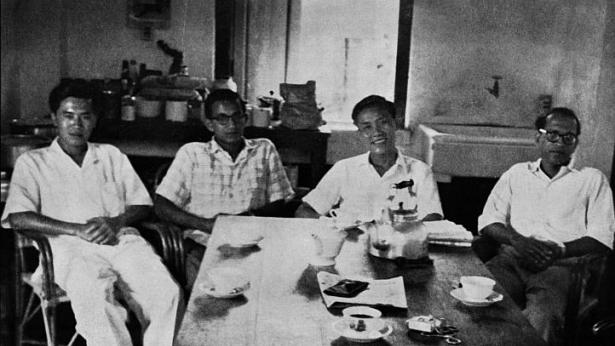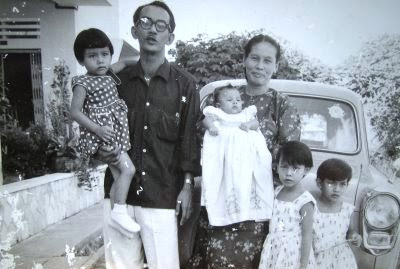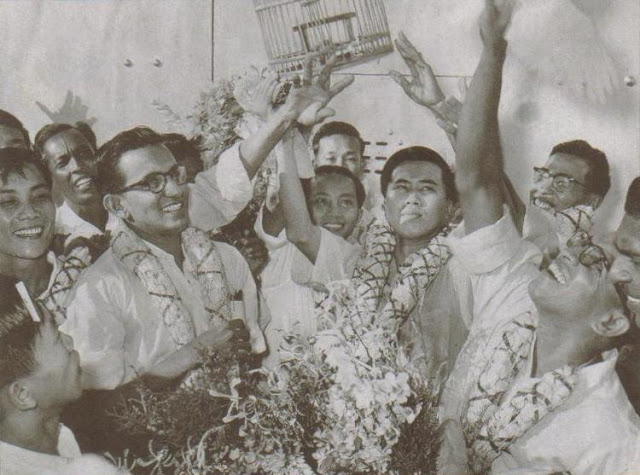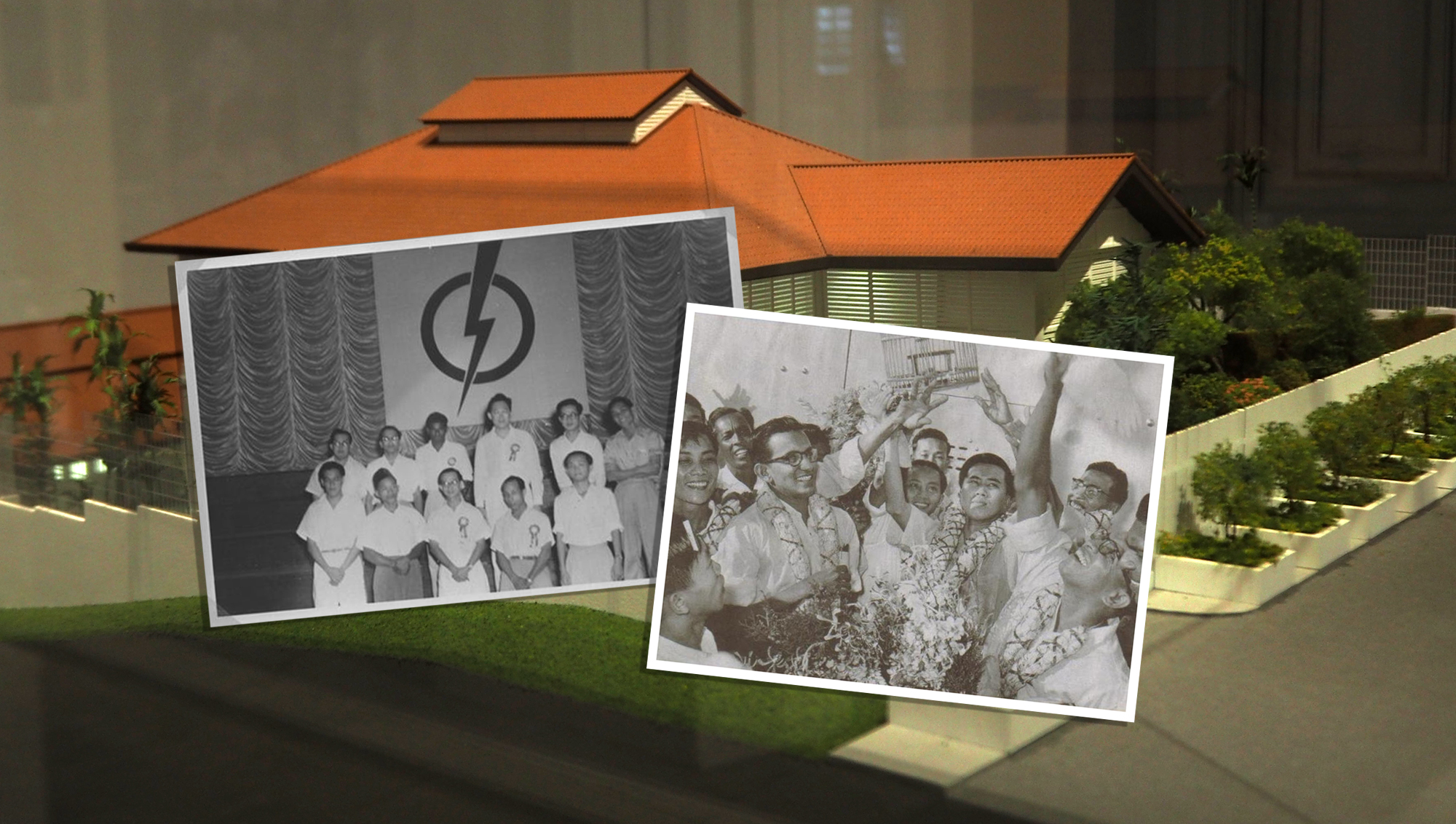*Editor's note at 4pm, July 2, 2017: We received feedback from a reader, and this article has been updated with the correct timing of some of the events reflected.
Much has been said about the late Lee Kuan Yew's house at 38 Oxley in the midst of the ongoing Lee family dispute.
But instead of discussing the various views that have been expressed over the fate of the house, let's take a look at some of the people who have been associated with it in the past.
When speaking about 38 Oxley Road and its role in our history, one will inevitably bring up the 'Oxley Group' - the group of men who kickstarted the formation of a political party to wrest back control of Singapore from our British colonial masters.
It was a ragtag bunch comprising 14 men who convened the People's Action Party (PAP) in 1954.
Here are some of them:
Goh Keng Swee, Lee Kuan Yew, Toh Chin Chye, S Rajaratnam, and K M Byrne
 Goh Keng Swee, Lee Kuan Yew, Toh Chin Chye, S Rajaratnam, and K M Byrne.
Goh Keng Swee, Lee Kuan Yew, Toh Chin Chye, S Rajaratnam, and K M Byrne.
These men formed the initial Oxley Group, when they began meeting on Saturday afternoons in the basement of the Oxley Road house.
Lee, Goh, and Toh were credited with kickstarting the genesis of the People's Action Party.
The idea for a political party to overthrow British colonialism started with the Malayan Forum where the three of them met at while studying in England.
"[The objective of the Malayan Forum] was to build up political consciousness and press for an independent Malaya that would include Singapore." - The Singapore Story
S Rajaratnam, a similarly fervent anti-colonialist, and K M Byrne were later brought into the group.
Lim Chin Siong, Fong Swee Suan
Chinese-educated Lim Chin Siong and Fong Swee Suan were left-leaning trade-unionists who championed the causes of the working class and unemployed.
[caption id="" align="aligncenter" width="615"] A photo of Lim Chin Siong, S. Woodhull, Fong Swee Suan and Devan Nair taken by Lee Kuan Yew. Source[/caption]
A photo of Lim Chin Siong, S. Woodhull, Fong Swee Suan and Devan Nair taken by Lee Kuan Yew. Source[/caption]
Their work earned them the support of the majority Chinese working class - a support that Lee needed for his political campaigns.
Lee's association with Lim and Fong enabled him to tap on the Chinese-educated population that was "teeming with vitality".
Lim was exceptional in his Chinese-language oratorical skills and was often compared to his English-speaking counterpart Lee.
In the words of Lee in The Singapore Story, Lim and Fong were markedly substantial and passionate towards their cause:
"They were....more determined, more selfless, more hardworking, the kind of lieutenants we had been searching for."
Chan Chiaw Thor, Tann Wee Tiong, Tann Wee Keng
Other supposedly left-leaning members of the original Oxley Group included Chan and the Tann brothers. At that time, Tann Wee Tiong was founder of local law firm Rajah and Tann.
Devan Nair, Abdul Samad Ismail
According to Lee, he first met Samad when the latter was detained on St John's Island by the British authorities for subversive activity. Samad was then the chief sub-editor of the Malay publication, the Utusan Melayu.
 Abdul Samad Ismail with his family. Image via.
Abdul Samad Ismail with his family. Image via.
Presumably, because of Lee's representation during a legal review, Samad was released from St John's Island a few years later. Samad later joined in the meetings in the basement of 38 Oxley Road.
According to Lee, Samad was integral in giving them "access to the Malay-speaking world, and get [their] views across to the Malay masses through the Utusan Melayu".
 Devan Nair on the extreme right. He is pictured here with (anti-clockwise from right) Lim Chin Siong, S Woodhull, and Fong Swee Suan. Image via.
Devan Nair on the extreme right. He is pictured here with (anti-clockwise from right) Lim Chin Siong, S Woodhull, and Fong Swee Suan. Image via.
Samad later brought in Devan Nair, who would in later years become Singapore's third president. Similar to Samad, Nair was detained on St John's Island. According to Lee's memoirs, Nair appeared to be a very angry person, flamed by the passions of anti-colonialism at first sight.
However, Samad assured Lee that their stint in detention together revealed Nair to be a "strong man, totally dependable".
Perumal Govindasamy, Lee Gek Seng, Ismail Rahim, A.K. Karrupiah, Mofradi bin Haji Mohd Noor, S. Socklingam
This last group of people came from the trade unions. Govindasamy and Rahim from the Singapore Post and Telegraph Uniformed Staff Union; Lim from the Singapore Union of Postal and Telecommunications Workers; Karrupiah and Sockalingam from the Public Works Department Labour Union; Mofradi from the Singapore Medical Workers Union.
The inclusion of trade union workers enabled Lee's political party to appeal to a greater mass of the working class, and aligned their causes into a unified support for the PAP.
From 38 Oxley to PAP
From this group of people, 14 men were selected to be convening members of the PAP on November 21, 1954.
Out of the 14, seven were Chinese, three Malays, and four Indians. More importantly, the occupational make-up of the group spanned the spectrum - including professionals, such as lawyers, journalists, and teachers, and other workers, such as bus conductor, clerk, and foreman.
The rest, as they say, is history.
Related article:
38 Oxley Road’s basement witnessed the birth of PAP & the shaping of S’pore’s political history
Top image adapted from here and National Archives.
1819 is a labour of love by Mothership.sg where we tell stories from Singapore's history, heritage & culture. Follow us on Facebook, Instagram and Twitter!
If you like what you read, follow us on Facebook, Instagram, Twitter and Telegram to get the latest updates.

